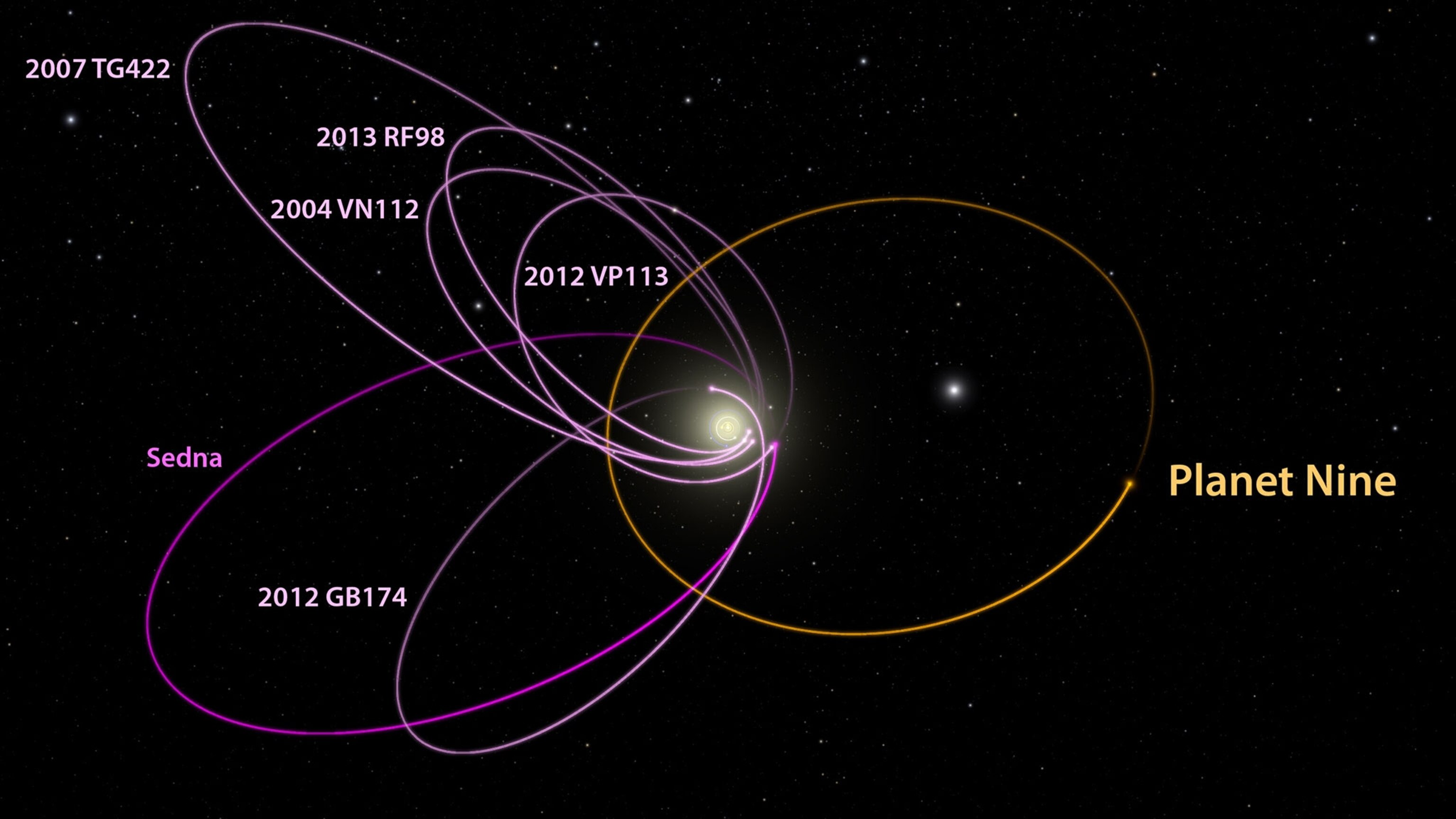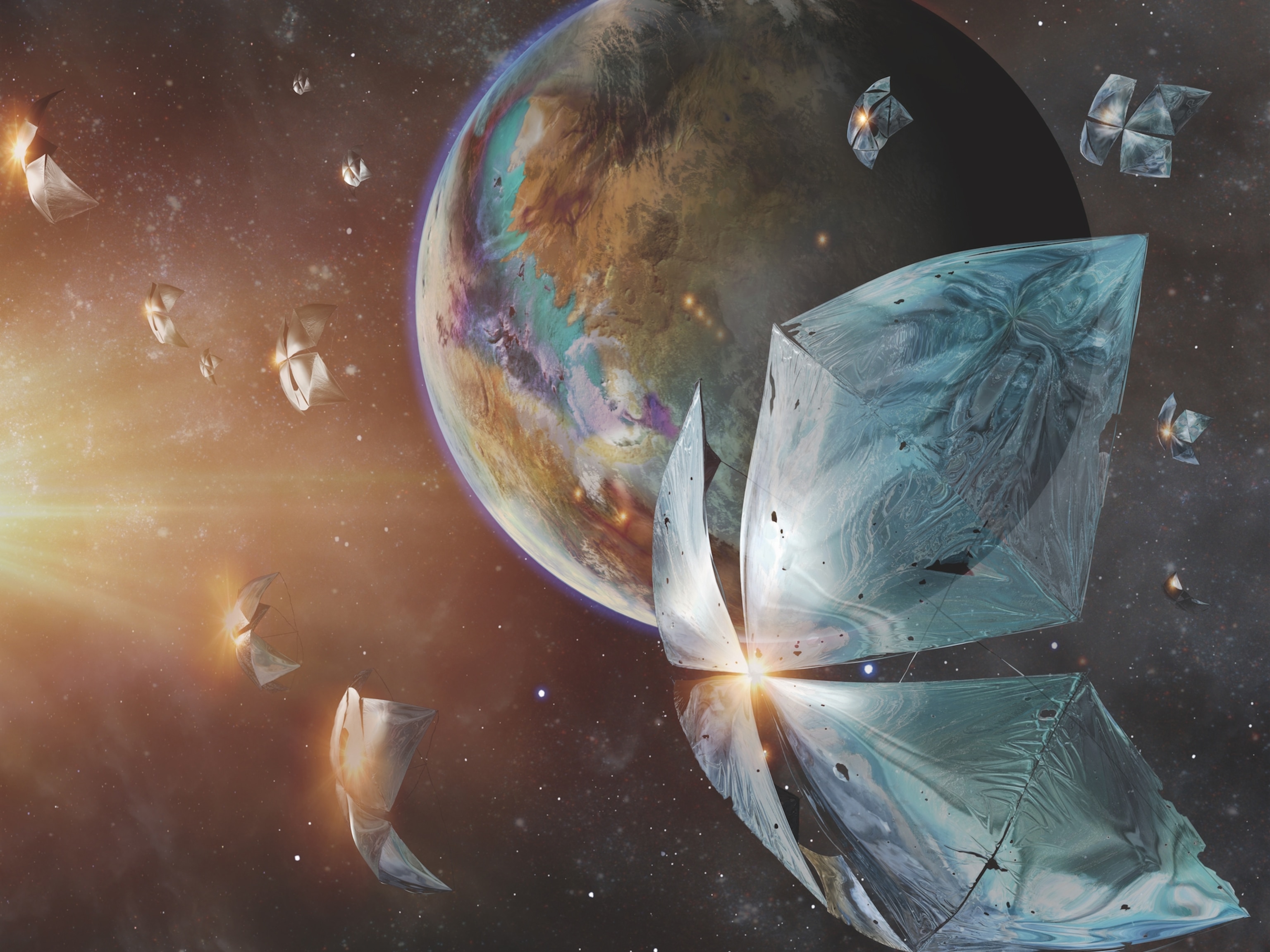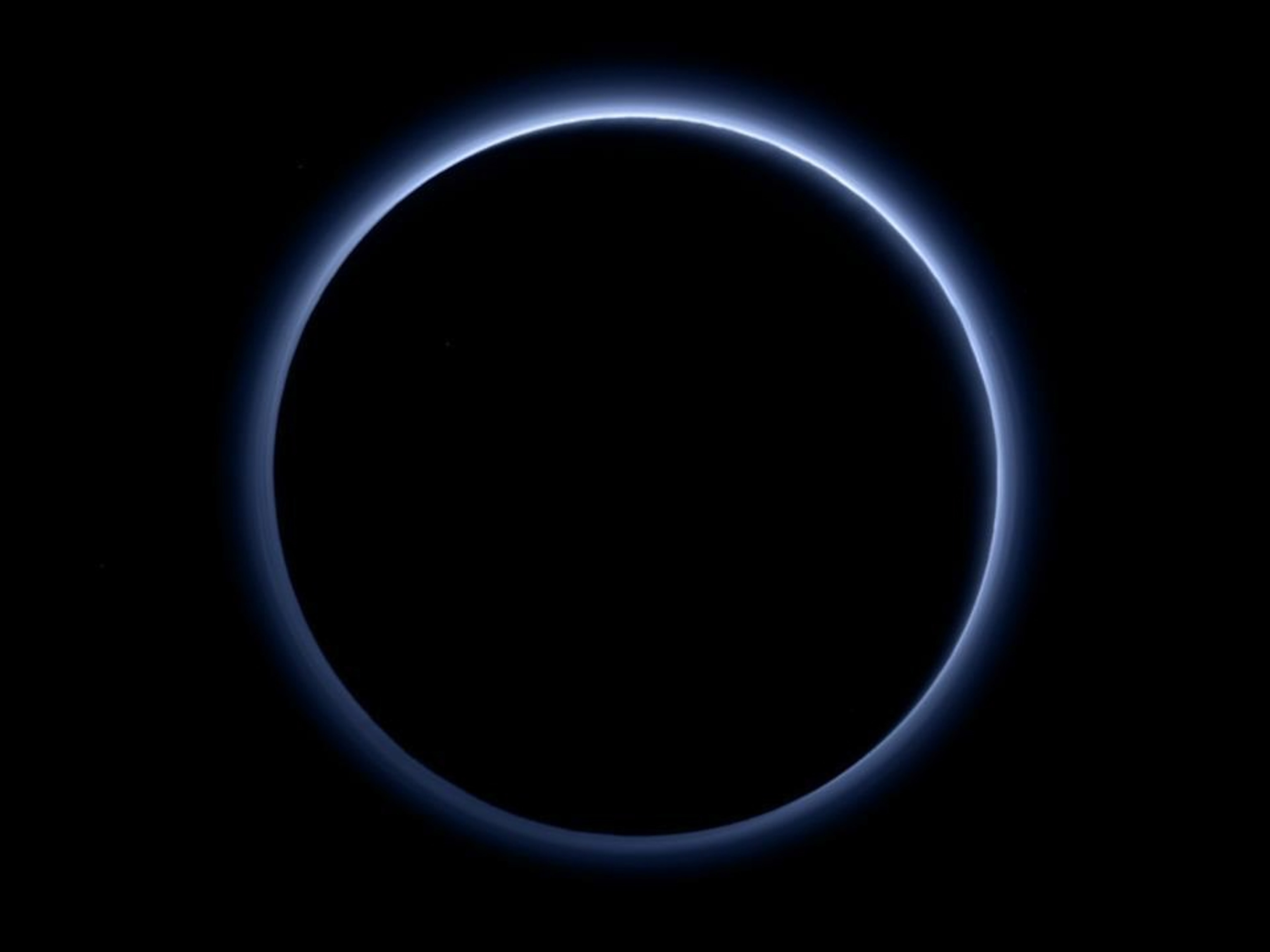
Scientists Find Evidence for Ninth Planet in Solar System
The world, if it exists, would join the other eight (or nine, depending how you feel about Pluto).
A planet larger than Earth could be hiding in the cold, dark depths of the solar system. The presence of the planet, which would lie far beyond Pluto, is betrayed by the curious orbits of a handful of distant icy worlds.
As described Wednesday in the Astronomical Journal, the gravitational signature of a large, lurking planet is written into the peculiar orbits of these farflung worlds. Called extreme Kuiper Belt Objects, the misbehaving bodies trace odd circles around the sun that have puzzled scientists for years.
It’s tantalizing evidence that a ninth large planet might live in the solar system, though the world hasn’t been detected yet.
“If there’s going to be another planet in the solar system, I think this is it,” says Greg Laughlin of the University of California, Santa Cruz. “It would be quite extraordinary if we had one. Fingers crossed. It would be amazing.”
The team calculated that the planet, if it’s there, would be about 10 times as massive as Earth, or roughly three times larger. That makes it a super-Earth or mini-Neptune—a type of planet the galaxy is incredibly efficient at assembling, but which has been conspicuously absent from our own neighborhood.
And it’s really far away. Simulations suggest that the planet’s closest approach to the sun would be roughly 200 to 300 times farther out than Earth’s. Its most distant point? That’s way out in the hinterlands, between 600 and 1,200 times farther than Earth.
“This thing is on an exceptionally frigid, long-period orbit, and probably takes on the order of 20,000 years to make one full revolution around the sun,” says Caltech’s Konstantin Batygin, who is one half of the planet-sleuthing team..
Predicting Planet Nine
Batygin and his Caltech colleague Mike Brown didn’t set out to find evidence for a new planetary neighbor—that happened by accident. In 2014, a different team had discovered an object called 2012VP113. Known colloquially as “Biden,” the new world’s orbit was enigmatic and similar to that of Sedna, another world discovered beyond Pluto.
Both Sedna and Biden took somewhat cattywampus paths around the sun, suggesting to scientists that a distant object’s gravity might be sculpting their peculiar orbits, as well as those of a handful of other distant worlds.
Brown and Batygin took a close look at six of these worlds and determined that their orbits clustered in a way that could not occur simply by chance. (“That probability clocks in at a whopping 0.007 percent,” Batygin says.) Then they simulated the outer solar system and tried to figure out how to generate the observed patterns.
Soon, Batygin and Brown could rule out gravitational effects intrinsic to the Kuiper Belt itself, meaning that they were looking for a single, cosmic sculptor.
They added a ninth large planet to the fray, and tweaked its orbit and mass. A ten-Earth-mass planet on an egg-shaped orbit easily explained mysterious features of Sedna’s and Biden’s orbits, as well as the paths taken by other extreme Kuiper Belt worlds.
It also explained a bizarre population of worlds that orbit the sun perpendicularly to the plane of the solar system. "We sort of stopped laughing at our own calculations at that point," Batygin says.
He and Brown suspect the planet formed much closer to the sun and was launched outward when the solar system was very young. Back then, he says, the sun was still snuggled into its native stellar cluster, and the surrounding stars would have helped corral the flying planet and kept it from escaping the clutches of the sun’s gravity. It’s a compelling tale, but not everyone is convinced it’s likely.
“I tend to be very suspicious of claims of an extra planet in the solar system,” says Hal Levison of the Southwest Research Institute. “I have seen many, many such claims in my career and all of them have been wrong.”
Finding Planet Nine
If this ninth large planet is out there, it’s so distant and so dim that it isn’t surprising the world hasn’t been detected yet. “This thing will be faint. Like, crazy faint,” says Laughlin, who calculated that Pluto could be as much as 10,000 times brighter than the new planet.
At such extreme distances, even a relatively large planet wouldn’t have a heat signature detectable by current surveys, and it wouldn’t reflect much sunlight. That means astronomers searching for it not only need to use incredibly powerful telescopes, they need to know where to look. In other words, it’s like looking for a single, moving speck of light in a vast and nearly impenetrable sea of stars.
“We don’t know exactly where it is, or else we’d just point the telescope at it tomorrow and it would be right there. But the sky is really big and this thing might be pretty faint, depending on how far out it is,” says Chad Trujillo of the Gemini Observatory in Hawaii, who discovered Biden.
But that doesn’t mean scientists won’t try. Among others, the Subaru telescope in Hawaii is up to the task, and Batygin and Brown are already on the hunt. Trujillo says he and his colleagues plan to begin searching along the predicted orbit next month.
The Original Planet X
It’s not the first time scientists have suggested the presence of a large, faraway planet. Indeed, such predictions stretch back more than a century, though none has ever turned out to be right.
Perhaps the best known was that of Percival Lowell, who insisted that a world he called Planet X was waiting to be discovered beyond the orbit of Neptune. Lowell’s convictions triggered a decades-long race to find Planet X, and resulted in the discovery of Pluto in 1930.
But Pluto was too small to explain what Lowell believed were telltale oddities in the orbits of Uranus and Neptune; those turned out to be the result of inaccurate measurements, rather than the invisible tugs of a ninth large world. In the intervening 86 years, many more such predictions have been made. And failed.
Perhaps this one won’t fade into the cosmos.
“I consider that the Batygin and Brown paper is the first to convincingly show the existence of this planet and constrain fairly well its orbit,” says Alessandro Morbidelli of the Observatoire de la Cote d’ Azur. “It’s a very solid argument.”
Follow Nadia Drake on Twitter and Google+.










